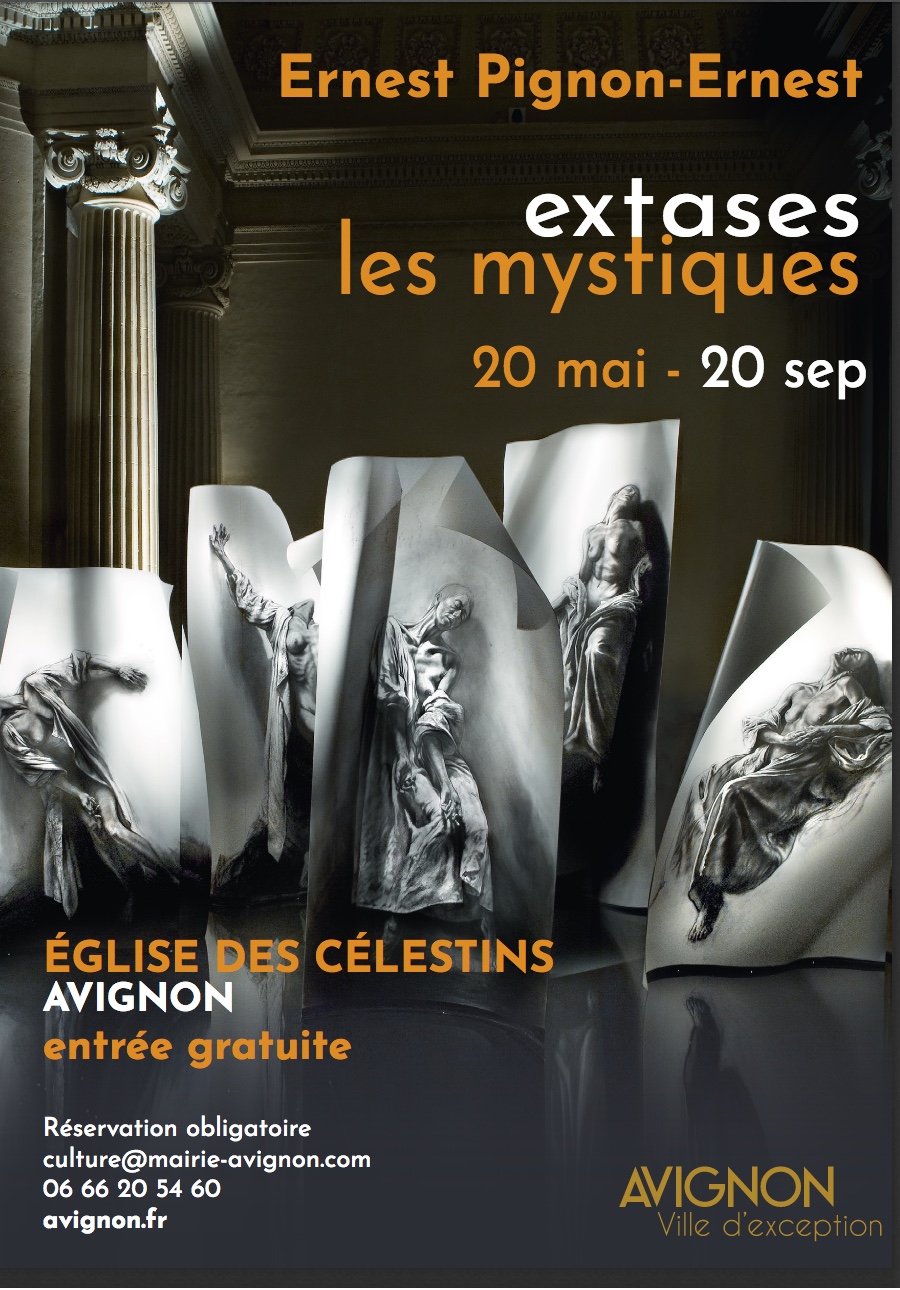Eventually… an exhibition to be seen after the pandemia lockdown
The annual exhibition cannot be in the Pope Palace
200m from Les Jardins de Baracane B&B and after the exhibition by Ernest Pignon-Ernest in the Palais des Papes, the artist comes back and exhibits in the Célestins Church from May 20 to September 20.
In this highly spiritual place, it is the monumental works Extases – the Mystics that take place under the chapel.
In the exceptional health conditions linked to the CoVid-19 epidemic, reservations are required to access the free exhibition: culture@mairie-avignon.com / 06 66 20 54 60
In the Church of the Celestins
The previous Ecce Homo exhibition received more than 400,000 visitors from July 2019 to the end of February 2020 at the Palais des Papes. Now, Ernest Pignon-Ernest takes over the Célestins church (place des Corps-Saints, Avignon) with his installation Extases – Les mystiques inspired by the texts of the great Mystics.
It was during the 2008 summer that the creation of this installation took place in Avignon, at the Chapelle Saint-Charles. Since then, it has been hosted in Saint-Denis (Chapel of the Carmelites), in Lille, in Saint Cosme, in Paris (Chapel of the hospital of the Salpêtrière), in Nice, in Naples with each time recreation and adaptation to specifics of the places.
The origin of the work dates back to almost thirty years: following his collages in the streets of Naples, Ernest Pignon-Ernest started a very free dialogue with the great mystics, Marie-Madeleine, Hildegarde de Bingen, Angèle de Foligno, Catherine de Sienne, Thérèse d’Avila, Marie de l’Incarnation, Louise du Néant and Madame Guyon.
Fascinating piece of art
Everything came from a questioning, from a fascination that can only carry those who wish to evoke, think, figure a phenomenon as disturbing as that of ecstasy.
For an artist who has always made the body the object and the subject of his explorations, meeting around a theme of this nature is as much a quest as a challenge.
How to represent what cannot be seen? How to make images of flesh that aspire to disembody? Ernest Pignon-Ernest responded to this by both a very acurate work of drawing, by the shaping of the leaves which support these drawings and their inscription in the space of the church. A gradual rise in light reveals that the entire installation is built on a black body of water which produces a deep and symbolic reversal of architecture and images.






